-
Hydrogen fuel cell has three electric motors for four-wheel drive
-
Exterior design expresses athletic eco-appeal with ‘Modern Toughness’
-
Interior features a unique seating layout and materials
-
Portable instrument cluster creates seamless digital space
 THE Nissan TeRRA SUV concept, to be unveiled at the Paris Motor Show, combines two outstanding Nissan strengths – SUVs and EVs – in a vehicle that is equally in its element off-road or gliding silently through the city.
THE Nissan TeRRA SUV concept, to be unveiled at the Paris Motor Show, combines two outstanding Nissan strengths – SUVs and EVs – in a vehicle that is equally in its element off-road or gliding silently through the city.
With an innovative 4×4 fuel-cell electric powertrain and an athletic-looking design, TeRRA takes sustainable motoring into exciting new territory.
Building on Nissan’s success with crossovers like the Juke and Qashqai, and its EV success with the LEAF, the TeRRA shows that Nissan’s zero-emission expertise encompasses fuel cells too.
It is designed as a functional and flexible choice, bringing with it eco-friendliness along with a secure driving feel under any road conditions.
Francois Bancon, Nissan’s general manager of product strategy and planning, said: ‘Our challenge was to take Nissan’s strength in SUVs and crossovers forward into the zero-emissions era, fuel cells being our new frontier.
 ‘The aim was a new approach to SUVs that’s relevant to urban life. The unique diagonal seating layout offers an exciting driving experience thanks to exceptional visibility that creates a sense of being in control under any conditions.’
‘The aim was a new approach to SUVs that’s relevant to urban life. The unique diagonal seating layout offers an exciting driving experience thanks to exceptional visibility that creates a sense of being in control under any conditions.’
Tough exterior, warm interior
Shiro Nakamura, Nissan senior vice president and chief creative officer, added: ‘We took our inspiration from the lifestyles of youthful customers in Northern Europe.
‘We heard their aspiration for sustainable mobility that can take them anywhere they want to go. Exploring our imagination of that natural space with the exterior, we have redefined the power of the SUV heritage in a much more athletic way.
‘You have the big tyres, high belt-line, thick pillars and thin side windows of the SUV vocabulary. But with a slender waist and a sculptured bonnet, we’ve created an ‘‘Implied Structure” of musculature under the skin.
 ‘Sharp corners, short overhangs and sculptured lamps contribute to a clean, confident stance. An aerodynamically flat body pan in an eye-catching color, protecting the full length of the underside, completes the image of what we call ‘‘Modern Toughness.” ‘
‘Sharp corners, short overhangs and sculptured lamps contribute to a clean, confident stance. An aerodynamically flat body pan in an eye-catching color, protecting the full length of the underside, completes the image of what we call ‘‘Modern Toughness.” ‘
Seamless digital space…
Facing the driver is a unique instrument cluster. It’s an electronic tablet – just like today’s popular portable devices – that serves as an ‘intelligent key’. The driver docks it when entering the car and removes it when leaving. When docked in TeRRA, the tablet’s default view displays speed and other information.
But the driver can easily toggle to entertainment, communications, navigation and other views. Outside the car it provides all the functions we expect from a tablet, plus it stays continually in touch with the vehicle. The idea is seamless information and communication, on the road and everywhere else.
…offers a fresh perspective on the road
TeRRA’s driver sits front and almost centre in a unique diagonal layout that positions rear passengers over the shoulders of those in front, rather than directly behind.
The seats themselves express a hexagonal motif that is carried through various aspects of the design. Fold the three passenger seats down and you notice that TeRRA’s boot floor is completely flat, presenting no obstacles to carrying bikes, kayaks… or assemble-yourself furniture from Scandinavia. This flat surface is a function of the remarkably compact hydrogen fuel-cell and electric motor package.
Four-wheel drive but zero emissions
Although TeRRA is presented as a design concept, not a technical exhibit, its proposed 4×4 fuel cell electric powertrain is far from imaginary. Powering the front wheels is the electric propulsion system currently featured in the Nissan LEAF.
 In each back wheel, providing all-wheel power as needed, is an in-wheel electric motor, based on the working prototypes featured in three successive PIVO concepts. As no drive shafts are required to power the rear wheels, there is no hump in the floor or on the underbody. This allows for the flat boot floor and the underside bodypan.
In each back wheel, providing all-wheel power as needed, is an in-wheel electric motor, based on the working prototypes featured in three successive PIVO concepts. As no drive shafts are required to power the rear wheels, there is no hump in the floor or on the underbody. This allows for the flat boot floor and the underside bodypan.
Under the bonnet is ample space for Nissan’s hydrogen fuel cell stack: a flat, highly compact unit that features world-leading power density of 2.5kW/L. The latest in a series of Nissan fuel cells since 1996, the stack costs just one-sixth of its 2005 predecessor as the need for expensive precious metals has been slashed to one-quarter of the previous level.
TeRRA is purely a concept car, but it signals that Nissan is ready to mass-produce fuel cell electric vehicles whenever hydrogen becomes widely available.



